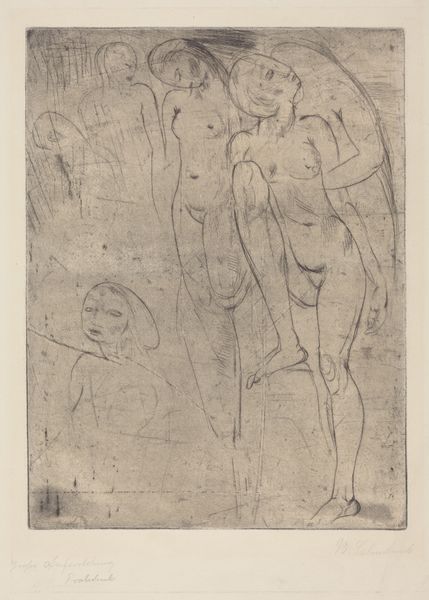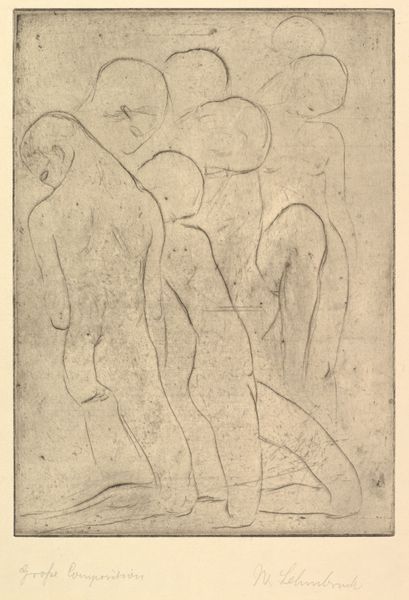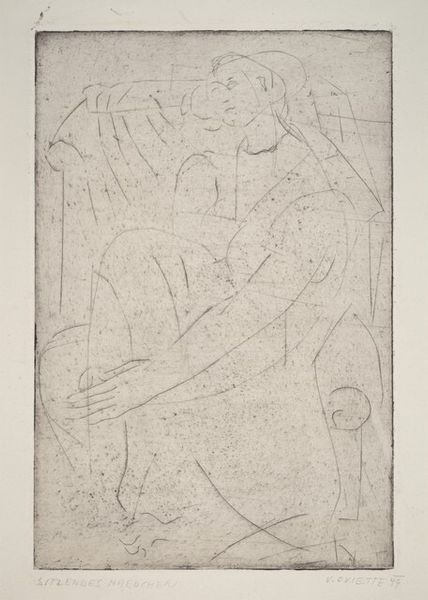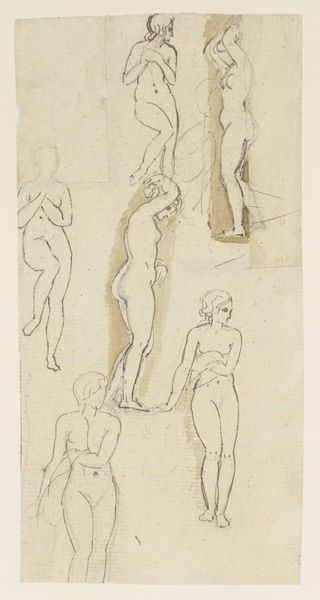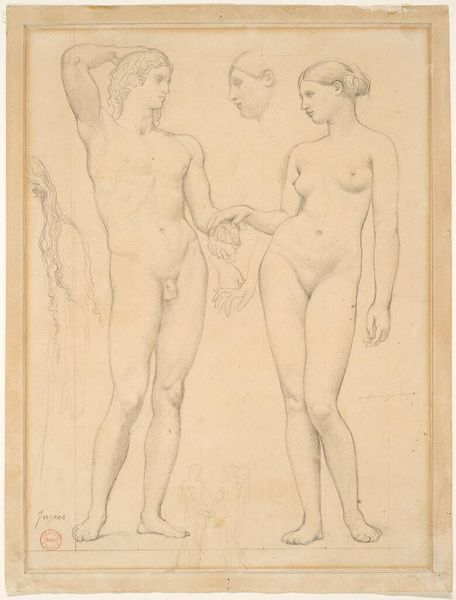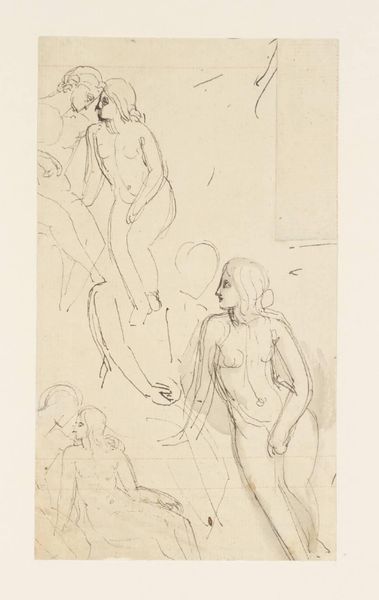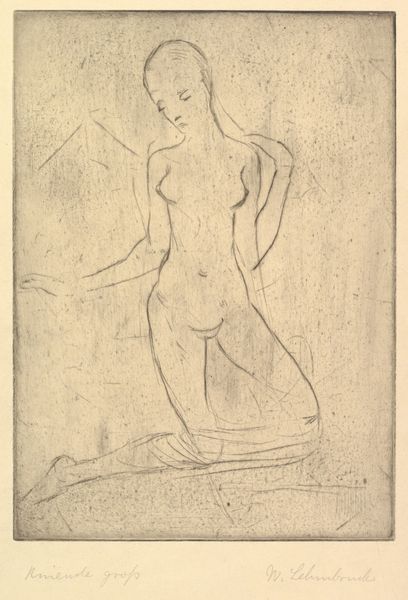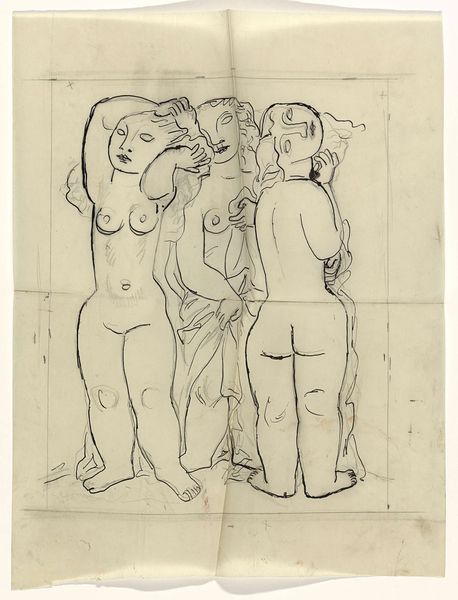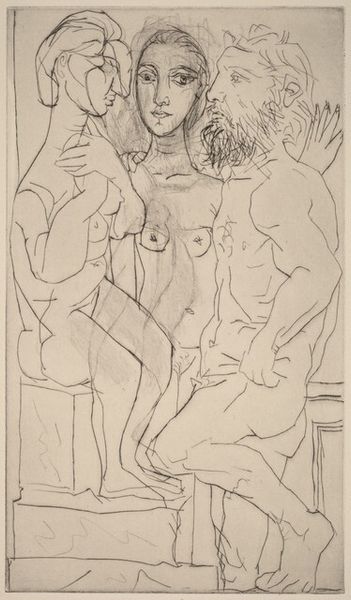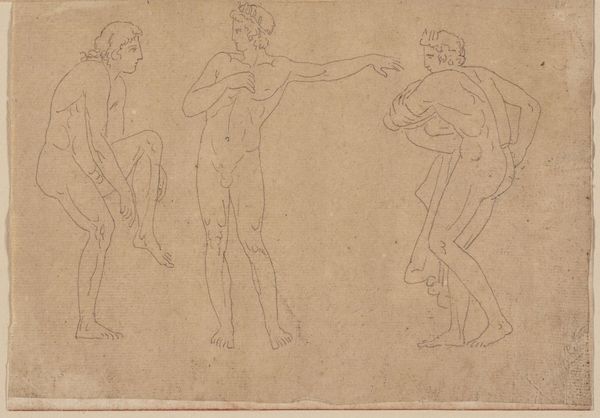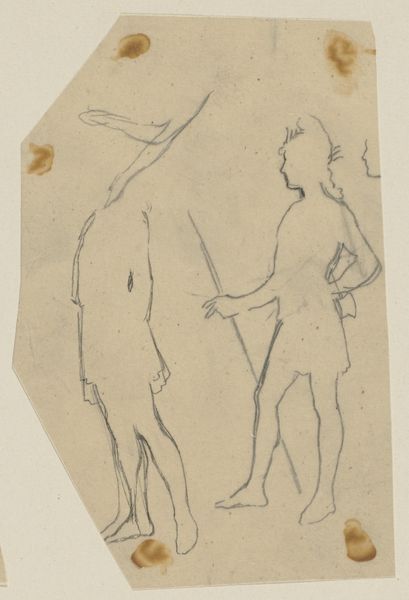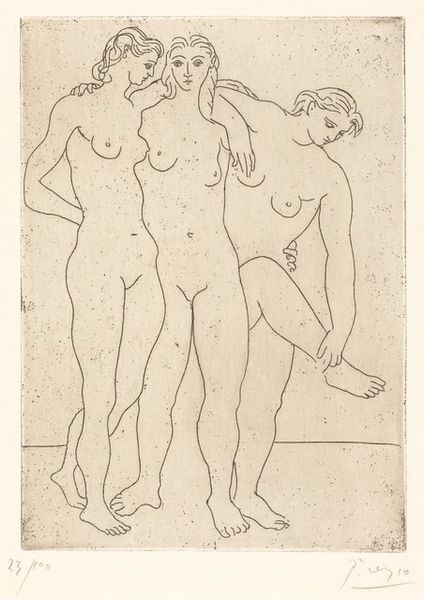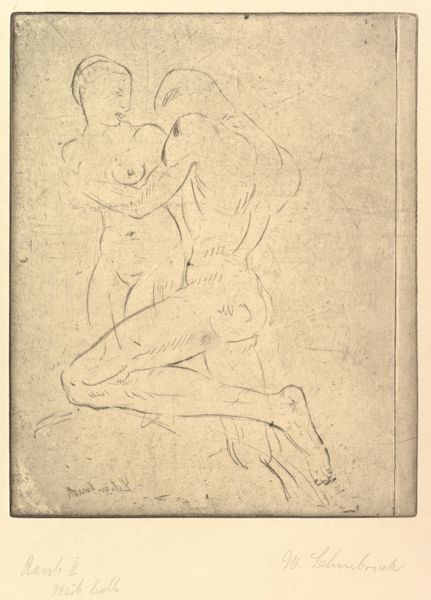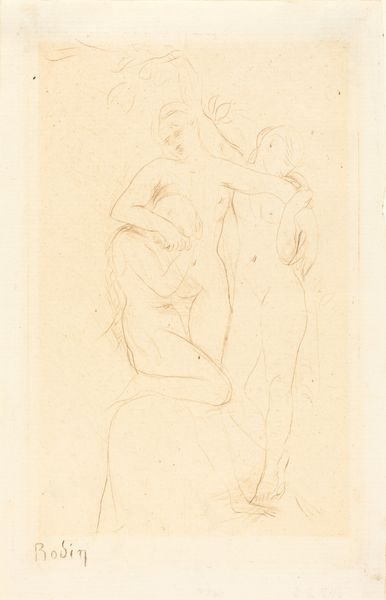
drawing, print
#
drawing
#
cubism
# print
#
figuration
#
line
#
history-painting
#
nude
#
modernism
Copyright: National Gallery of Art: CC0 1.0
Editor: We're looking at "Three Bathers I," a drawing-turned-print by Pablo Picasso from 1922-23. It feels so stark, almost like a classical frieze but done with this modern, broken line. What’s your take on it? What should I know? Curator: Well, firstly, feel the line itself. It's not just outlining forms; it's a tremor of an idea, a vibration trying to find its shape. These aren’t just figures, they're emerging – and fighting – to emerge, wouldn't you say? Picasso, post-Cubism, is wrestling with how much to reveal, how much to suggest. The negative space, almost ghostly. It speaks volumes, no? Editor: Yes, definitely ghostly, almost like memories. There's a tension, but is that what he’s going for, this… withholding? Curator: Perhaps, he invites us to fill in the blanks, to be complicit in the act of creation, our minds working to create these ladies of leisure and comfort from our imagination! The bareness of the landscape gives very little to assist though. It's history-painting through the veil of memory. A touch of nostalgia, maybe? Perhaps something mournful… Editor: I hadn't thought of it like that, I was so focused on what *was* there. Now it really feels more open-ended... thanks, the history helps too. Curator: See, Art is never fixed! You were right, they’re like ghosts - spirits dancing just below perception. And those figures… they are a statement about freedom and life in an era struggling to redefine those terms after the tragedy of World War 1. So perhaps now it is all complete, an interpretation based upon another. Editor: Absolutely! Now when I see this I won’t just be seeing line, but this ghostly presence in the world and freedom within Picasso's constraints. That makes it a lot more poignant.
Comments
No comments
Be the first to comment and join the conversation on the ultimate creative platform.
